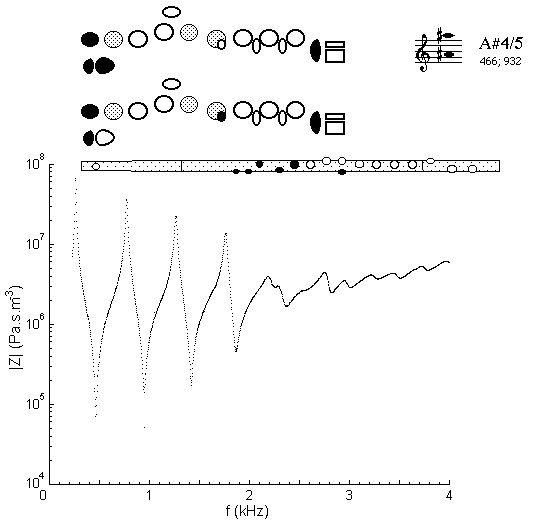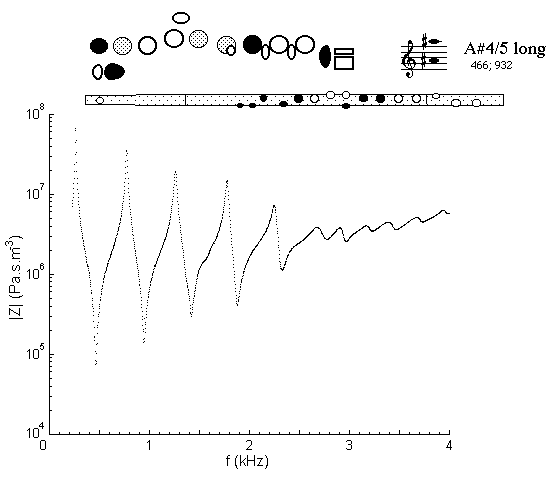| Acoustics of baroque, classical and modern flutes |
modern flute
|
A#5 |

|
Fingering Acoustic schematic Non-specialist introduction
to acoustic impedance |
The flutist uses the same fingering for A#4 and A#5, but changes the speed, length and shape of the jet. The first four minima can be played. These minima support harmonics in A#4. In A#5, only the second and fourth minima are important. The two fingerings given are acoustically equivalent: either the left thumb or the Bb lever is used to close the same hole.
Long Fingering |
modern flute C foot |

|
Fingering Acoustic schematic Non-specialist introduction
to acoustic impedance |
This fingering is sometimes more convenient in rapid passages involving B, A# and other notes. Although it is technically a cross fingering, the three large open tone holes mean that the effect of the closed holes controlled by the index finger of the right hand have an effect only well above the cut-off frequency, and thus only subtle and only on high harmonics.
| Acoustic measurements are available for these flutes - modern B, modern C, classical C, classical D, classical flared, baroque Sound clips are available for modern B, classical flared and baroque |
To compare flutes, it is easiest to open a separate browser window for each instrument. |